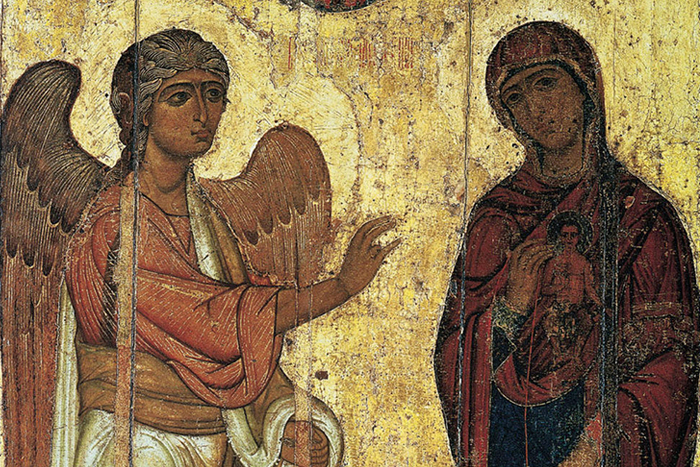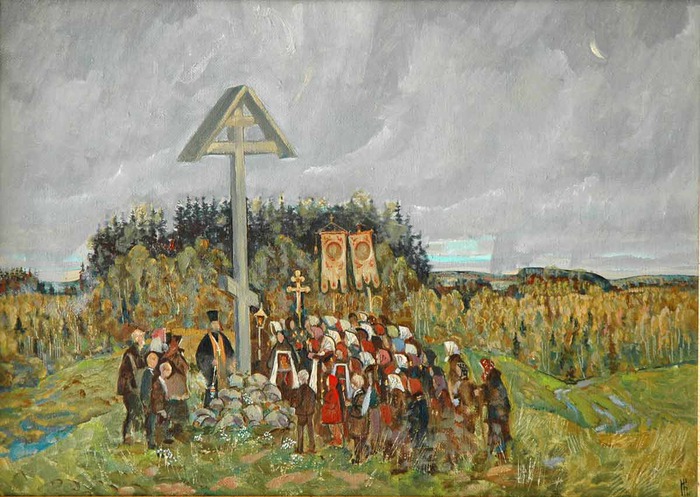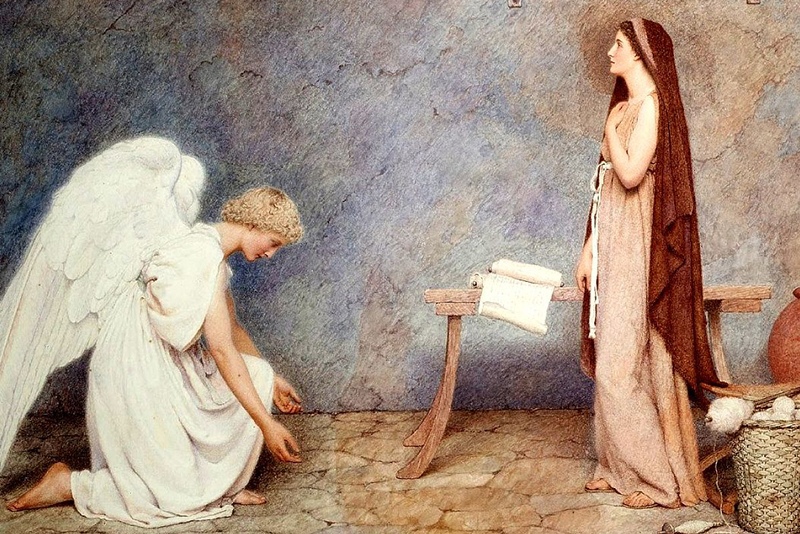
Unfortunately, since most Orthodox Christians have to work on Christmas Eve, they do not have the opportunity to attend Vespers with the Liturgy of St Basil the Great, served in the morning.
This service is often perceived as the last, most intense and mysterious harbinger of the celebration. It is special, because it opens the daily cycle dedicated specifically to the Nativity of Christ. As it seems to me that one of the most overlooked parts of this service is the reading of the eight paremias, I would like to say a few words about each of them.
The first of these Old Testament passages is taken from the book of Genesis and dedicated to the first three days of creation. Although we understand that nothing in the Church is done without a reason, the question still arises, how does this relate to the Nativity of Christ? There are two answers to that. First, it points to the One Who is going to be born into the world. Notably, in the Hebrew text the word “God” in this passage is used in the plural, which is a veiled indication of the participation of all Three Persons of the Holy Trinity in the creation of the world. Secondly, from the very moment of Nativity, the spiritual re-creation of the universe begins on an immaterial level. Indeed, by His redeeming sacrifice the Saviour frees us from sin, curse and death, leading us from darkness to light, just as the entire world was brought from non-being into being.
The next paremia is taken from the 24th chapter of the book of Numbers and devoted to the events of the blessing of Israel by the pagan soothsayer Balaam. As we remember, after forty years of wandering in the wilderness, the ancient Jews approached the kingdom of Moab. Their ruler Balak, fearing defeat in the upcoming battle, hired Balaam to curse the chosen people and thereby guarantee him victory. Under the influence of the Spirit of God, the soothsayer pronounced a blessing instead of a curse. Among other things, we hear, “How fair are your tents, O Jacob, your encampments, O Israel!” (Num. 24, 5) and then, “… A star shall come out of Jacob, and a scepter shall rise out of Israel” (Num. 24, 17). The beauty of Israel is associated here not with the forthcoming victory or its chosenness, but precisely with the Savior of the world born in this nation. Likewise, the star of Jacob is meant here as a forerunner of both the star of Bethlehem and Christ Himself as a Guide to salvation.
The following passage is from the book of the prophet Micah. In its spiritual and prototypical meaning, it is closely related to the two previous readings, as evidenced, in particular, by the following words, “But you, O Bethlehem of Ephrathah, who are one of the little clans of Judah, from you shall come forth for me one who is to rule in Israel, whose origin is from of old, from ancient days” (Micah 5, 2). This passage unambiguously points to the birthplace of the Messiah. Besides, the closing words of this verse once again emphasize the divine dignity of the Second Person of the Holy Trinity.
The fourth paremia is taken from the book of the prophet Isaiah, the 11th chapter of which refers to “A shoot … from the stump of Jesse” (Isaiah 11: 1) and the following consequences. It carries us from the moment of the birth of the Messiah to the times following the Second Coming and the Last Judgement. This is an indication of the consequences of the incarnation and the subsequent atoning sacrifice of the God-man Christ (Jesse is the father of David, to whose line the Messiah was born). This idea can be clearly traced in the following words, “The wolf shall live with the lamb, the leopard shall lie down with the kid, the calf and the lion and the fatling together, and a little child shall lead them. The cow and the bear shall graze, their young shall lie down together; and the lion shall eat straw like the ox. The nursing child shall play over the hole of the asp, and the weaned child shall put its hand on the adder’s den. They will not hurt or destroy on all my holy mountain; for the earth will be full of the knowledge of the Lord as the waters cover the sea”(Isa. 11, 6-9).
The following reading is from the prophet Jeremiah. In fact, the actual text is taken from the non-canonical book of the prophet Baruch, but the quoted words, according to many researchers and interpreters, belong to Jeremiah, Baruch’s teacher and friend. The semantic content of this passage continues the topic of the greatness of God’s incarnation, started by Micah, “This is our God; no other can be compared to him. He found the whole way to knowledge, and gave her to his servant Jacob and to Israel, whom he loved. Afterward she appeared on earth and lived with humankind” (Bar. 3: 35-37).
The sixth paremia is taken from the book of the prophet Daniel (chapter 2). It interprets King Nebuchadnezzar’s dream about the colossus on clay feet. The stone falling off the rock and destroying the idol symbolizes Christ, while the idol itself signifies the ancient majestic kingdoms, the power of which rested on wealth and brute force, ultimately unable to save them from destruction. These kingdoms are opposed to the eternal and indestructible kingdom of God brought by the Messiah.
The seventh Old Testament reading is again taken from the book of the prophet Isaiah, “For a child has been born for us, a son given to us; authority rests upon his shoulders; and he is named Wonderful Counselor, Mighty God, Everlasting Father, Prince of Peace. His authority shall grow continually, and there shall be endless peace for the throne of David and his kingdom. He will establish and uphold it with justice and with righteousness from this time onward and forevermore. The zeal of the Lord of hosts will do this” (Isaiah 9: 6-7). Although the general meaning of this text is easy to understand, Iе is worth noting that although we are used to hearing the expression “prince of the world” in reference to the devil, in this case it refers specifically to Christ, as the true Prince of the world, coming to dethrone the evil power of the former “ruler”. It is in this action of liberating His fallen child (i. e. humankind) that “the zeal of the Lord of hosts” is manifested.
Finally, the last paremia is again taken from the “Old Testament Evangelist” Isaiah. This is a rather lengthy text, the centerpiece of which is the famous prophecy of the immaculate conception and birth of the Son of God, “Look, the young woman is with child and shall bear a son, and shall name him Immanuel” (Isa. 7, 14). This passage ends with the following words, “Take counsel together, but it shall be brought to naught; speak a word, but it will not stand, for God is with us!” (Isa. 8, 10). Here we see an indication that anyone rebelling against the Church founded by Christ will lose, that any enmity with God will inevitably end in defeat, and that we have nothing to be afraid of, because “God is with us”! With such a triumphant ending, these Old Testament readings, heard during the Christmas service, give hope and inspiration to us, modern Christians, living in difficult times.
I hope that this short article will help the reader prepare for the meeting of the newborn Messiah, even though we may be unable to attend a church service or simply “sleep through” the reading of the paremias, being distracted by extraneous thoughts.
Translated by The Catalogue of Good Deeds
Source: https://pravlife.org/ru/content/chto-vazhnee-vsego-v-rozhdestvenskiy-sochelnik-ili-pochemu-8-paremiy-vazhnee-12-blyud




